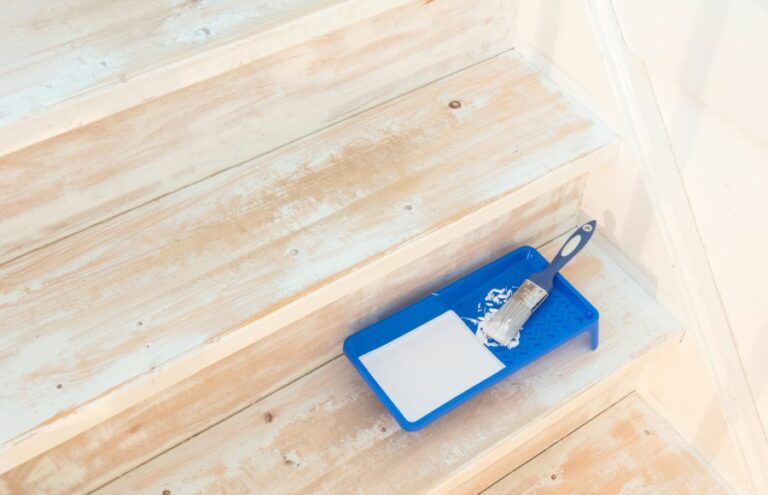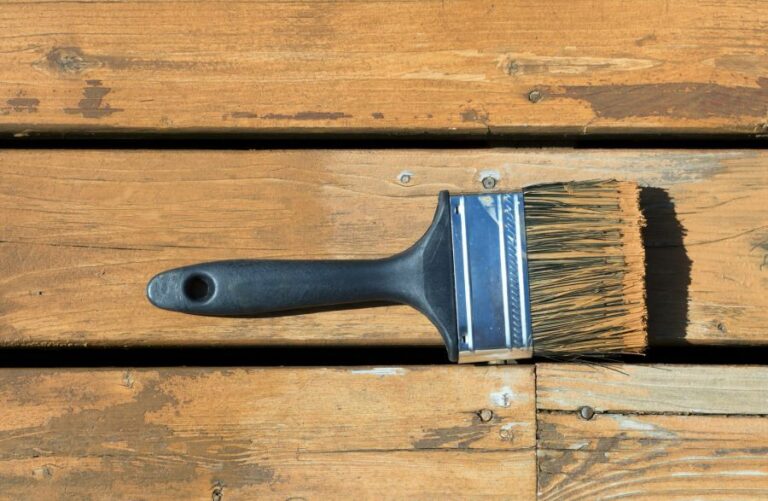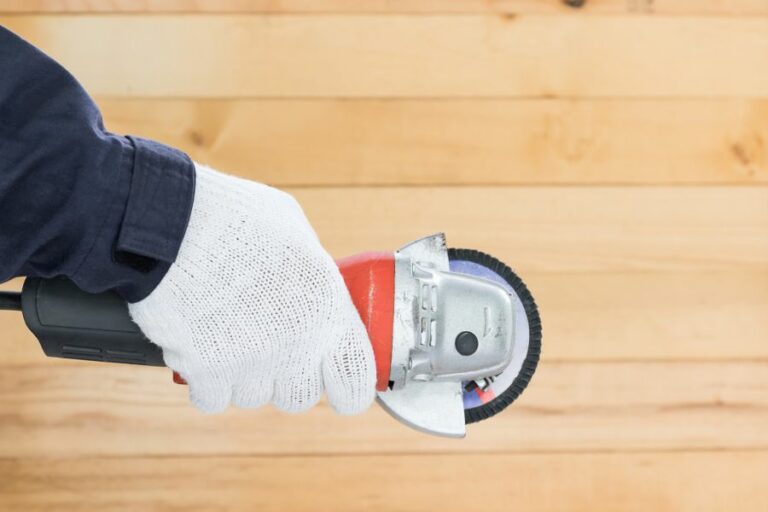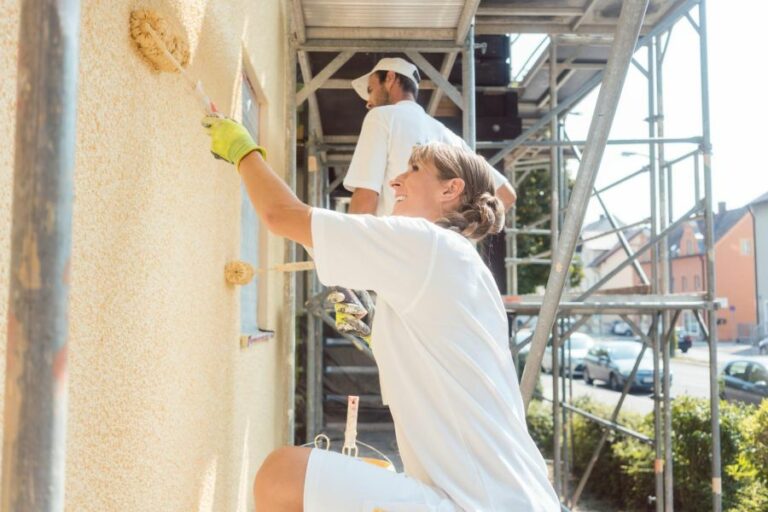Use Of Different Abrasives For Surface Preparation
Regarding surface preparation, selecting the right abrasive material is crucial for achieving the desired results. Luckily, you’ve come to the right place! With our extensive industry knowledge, we can confidently guide you through the various types of abrasives and their specific uses.
Use of different abrasives for surface preparation:
Various abrasives such as sandpaper, steel wool, wire brushes, grinding wheels, abrasive blasting, and abrasive sponges can be utilized for surface preparation. The choice depends on the specific task, material, and desired finish. Each abrasive has unique characteristics, applications, and suitability, making it essential to understand its functions to achieve high-quality and efficient surface preparation.

Discover the various abrasives used for surface preparation and the benefits of using the right one for each task. From glass beads to aluminum oxide, uncover the secrets to elevating your projects. Read on and enhance your surface preparation skills!
Contents
- 1 Various Abrasives for Surface Preparation Techniques
- 2 Exploring Diverse Surface Preparation Methods
- 3 Identifying Various Abrasive Categories
- 4 Sandblasting Abrasives: Types and Differences
- 5 The Versatile Applications of Abrasives
- 5.1 • What are Abrasives?
- 5.2 • 1. Cleaning and Surface Preparation
- 5.3 • 2. Cutting and Grinding
- 5.4 • 3. Polishing and Buffing
- 5.5 • 4. Sharpening Tools and Implements
- 5.6 • 5. Manufacturing and Finishing of Optical Components
- 5.7 • 6. Automotive Industry Applications
- 5.8 • 7. Woodworking and Furniture Making
- 5.9 • 8. Dental Applications
- 5.10 • 9. Electronic Industry Applications
- 5.11 • Conclusion
Various Abrasives for Surface Preparation Techniques
Surface preparation is a crucial step in many industries, including manufacturing, automotive refinishing, construction, and more. The aim is to clean and condition a surface to ensure the best possible adhesion of coatings or treatments.
One of the most common methods of surface preparation involves the use of abrasives. Here, we’ll explore different types of abrasives, their respective applications, and the advantages and disadvantages of each.
• Sandpaper
Sandpaper is a versatile abrasive that’s widely used for surface preparation. It consists of abrasive grains attached to a paper or cloth backing. Sandpaper comes in various grit sizes, which correspond to the number of abrasive grains per square inch:
- Coarse grit (40-60): Ideal for aggressive material removal, such as stripping paint or rust.
- Medium grit (80-120): Suitable for smoothing rough surfaces and removing small imperfections.
- Fine grit (150-180): Provides a smooth finish and is often used between coats of paint or primer.
- Very fine grit (220-320): Ideal for ultra-smooth finishes and light material removal.
Based on my experience, sandpaper is cost-effective and easy to use. However, it can be time-consuming, especially for larger surface areas.
• Steel Wool
Steel wool is a bundle of fine steel filaments and is available in different grades, ranging from very coarse to very fine. It is commonly used for tasks such as removing rust, paint, and varnish or polishing metal surfaces.
I recommend using steel wool when you require a gentle abrading action or need to clean and polish metallic surfaces. However, remember to wear gloves to avoid injury and be cautious when using it on softer materials, as it can cause scratching.
• Wire Brushes
Wire brushes have metal bristles (usually steel, brass, or stainless steel) and are used for aggressive cleaning and surface preparation. They are highly effective in removing rust, grime, and paint from metal surfaces. Wire brushes are available in various sizes and can be handheld or designed for use in power tools.
If you need to clean heavy rust, scale, or loose paint, wire brushes are an excellent option. However, they can damage softer materials, so it’s essential to use them only on more robust surfaces.
• Grinding Wheels
Grinding wheels are bonded abrasives consisting of abrasive grains held together in a matrix of glass, resin, rubber, or other materials.
They are commonly used for heavy-duty grinding, deburring, and cutting operations in various industries. Grinding wheels vary in size, shape, and grit, which determine their suitability for specific tasks.
Since grinding wheels offer a more aggressive cutting action, I recommend them for heavy-duty material removal, such as grinding, cutting, and shaping metal parts. Remember to adhere to safety guidelines and use appropriate personal protective equipment (PPE) when operating grinding wheels.
• Abrasive Blasting
Abrasive blasting, also known as sandblasting, is a process where abrasive particles are propelled at high speed onto a surface to clean, remove rust or paint, etch, or create a specific finish.
The most commonly used abrasives in blasting include sand, glass beads, steel grit, and more specialized materials such as garnet, walnut shells, or soda.
I recommend abrasive blasting for large or difficult-to-reach surface areas, as it provides uniform and efficient cleaning and material removal. Depending on the abrasive material used, it can also be gentle enough to use on delicate surfaces.
Keep in mind that abrasive blasting requires specialized equipment, safety measures, and may create dust and waste materials that need to be managed responsibly.
• Abrasive Sponges
Abrasive sponges are flexible foam pads coated with abrasive material, usually aluminum oxide or silicon carbide. They are versatile, conforming to curves and even reaching tight corners. Abrasive sponges are reusable and typically used for wet or dry sanding applications.
Ideal for woodworking, automotive, and DIY projects, abrasive sponges are a favorite for fine sanding and finishing work. They are gentle on surfaces and provide smooth finishes, especially on curved or contoured surfaces.
In conclusion, the right abrasive for surface preparation ultimately depends on the specific task, material, and desired finish.
Understanding the characteristics and applications of each type of abrasive can help you make the most informed decision, resulting in a high-quality and efficient surface preparation process for your project. Remember to always prioritize safety and adhere to recommended guidelines when using abrasives.
Exploring Diverse Surface Preparation Methods
Surface preparation is a crucial step in any painting or coating project, as it ensures the proper adhesion of the protective coating to the substrate, thus preventing premature failure of the coating system.
Additionally, proper surface preparation can extend the lifespan of the coating, enhance its performance, and reduce maintenance costs. The following are the most common types of surface preparation methods, including their benefits, drawbacks, and recommended applications.
• Abrasive Blasting
Abrasive blasting, also known as sandblasting, is a common method of cleaning and preparing surfaces by directing a high-pressure stream of abrasive particles (such as sand, steel grit, or glass beads) at the substrate.
This technique efficiently removes rust, scale, old paint, and other contaminants, while also providing a profiled surface for the coating to bond with.
– Dry Abrasive Blasting
Dry abrasive blasting is the use of non-water-based media for surface preparation. Advantages of dry abrasive blasting include:
- Fast and efficient removal of surface contaminants and the creation of a profile
- Wide range of abrasive media available to suit various substrates
- The ability to work on large areas or confined spaces
However, there are some drawbacks to dry abrasive blasting, including the generation of dust and the risk of damaging sensitive substrates. It is essential to ensure adequate ventilation and dust containment when using this method.
– Wet Abrasive Blasting
Wet abrasive blasting involves the use of water and abrasive media for surface preparation. The benefits of using wet abrasive blasting include:
- Significantly reduced dust generation compared to dry abrasive blasting
- The ability to remove water-soluble contaminants such as salts
- Increased particle velocity, making it a fast and efficient method
Wet abrasive blasting is recommended for use on sensitive substrates and in situations where dust containment is a concern. However, this method may not be suitable for substrates that are sensitive to moisture or require a dry profile for coating adhesion.
• Chemical Cleaning
Chemical cleaning involves the use of solvents, acids, or alkalis to dissolve surface contaminants or to break down rust and scale. This method can be effective for removing oil, grease, and other soluble contaminants from surfaces.
However, it is important to use the appropriate chemicals for the specific substrate and contaminants, and to follow proper safety protocols.
A common chemical cleaning method is acid pickling, which involves applying an acid solution to the surface to dissolve rust and scale, followed by a thorough rinsing with water to remove any residual acid.
This method is particularly useful for steel surfaces but should be performed under controlled conditions to avoid potential hydrogen embrittlement.
• Mechanical Cleaning
Mechanical cleaning involves using physical methods such as wire brushing, grinding, or scraping to remove rust, scale, and other contaminants from the surface.
These methods are typically less aggressive than abrasive blasting or chemical cleaning but can still provide an adequate surface preparation in some cases.
Some of the advantages of mechanical cleaning include:
- The ability to selectively remove specific contaminants without affecting the underlying substrate
- The ability to work on small or localized areas
- Minimal dust generation and lower equipment costs
However, mechanical cleaning methods may not be sufficient for surfaces with heavy rust or scale, and proper assessment of the surface condition should be performed prior to choosing this method.
• Power Tool Cleaning
Power tool cleaning involves the use of power-driven tools such as wire brushes, sanders, or grinders to remove rust, scale, and other contaminants from the surface. This method is more efficient and effective than manual mechanical cleaning and can achieve higher quality surface preparation.
Power tool cleaning is particularly useful for preparing small or difficult-to-reach areas where abrasive blasting may not be feasible.
However, it is essential to select the appropriate tool and attachment for the specific substrate and contaminant to avoid damaging the surface or creating an inadequate profile for coating adhesion.
• Ultra-High-Pressure Water Jetting
Ultra-high-pressure water jetting, or hydroblasting, is a method of surface preparation that involves the use of water at pressures above 30,000 psi to remove rust, scale, old paint, and other contaminants from surfaces.
This method is very effective at cleaning substrates without the use of abrasive media, and it generates virtually no dust.
Water jetting is an excellent option for preparing large surfaces, particularly those sensitive to the abrasive particles used in sandblasting. Additionally, it can be used to remove water-soluble contaminants like salts, which are difficult to remove with other methods.
However, it is important to consider the potential for water ingress and the need for thorough drying of the substrate prior to coating application, particularly for moisture-sensitive materials or coatings.
In conclusion, the choice of surface preparation method will depend on various factors, including the type of substrate, the condition of the surface, the type of contaminants present, and the desired outcome.
By understanding the advantages and drawbacks of each method, and seeking professional guidance, you can ensure that the most appropriate surface preparation technique is employed to achieve optimal coating performance and longevity.
Type | Description |
|---|---|
Cleaning | Removing dirt, debris, and grease from a surface for better adhesion and appearance. |
Abrasive Blasting | Using high pressure and abrasive materials to remove rust, old paint, and other contaminants from a surface. |
Chemical Cleaning | Using chemicals to clean or etch a surface, typically for the removal of corrosion or surface contaminants. |
Grinding & Sanding | Using abrasive tools or machines to remove material or roughen a surface for better adhesion and uniform appearance. |
Power Tool Cleaning | Using power tools like wire brushes or sanders to clean surfaces and remove loose materials. |
Hand Tool Cleaning | Using manual hand tools such as scrapers or wire brushes to remove loose materials or clean surfaces. |
Water Jetting | Using high-pressure water to clean and remove materials from a surface without damaging it. |
Acid Etching | Using acid solutions to etch a surface, increasing its texture or roughness for better adhesion or a specific appearance. |
Identifying Various Abrasive Categories
Abrasives are materials that are widely used in various industries, such as manufacturing, construction, and automotive, primarily for polishing, grinding, and cutting surfaces. They can be categorized into two primary types: natural and synthetic.
• Natural Abrasives
Natural abrasives are minerals that are found in nature and can be directly used in various abrasive applications. These minerals are usually converted into bonded or coated abrasives before using them. Some of the most common natural abrasives are:
– Garnet
Garnet is a popular natural abrasive due to its hardness, durability, and sharp edges. It is widely used in sandblasting, waterjet cutting, and woodworking. Garnet’s low friability enables it to maintain its sharp edges during usage, enhancing cutting performance.
– Diamond
Diamond is the hardest known natural material and is highly effective in abrasive applications due to its toughness and resistance to fracturing. It is majorly used for cutting and grinding hard materials like stone, concrete, and metal.
Diamond-coated cutting tools, saw blades, and drill bits are common examples of diamond abrasives.
– Emery
Emery, also known as corundum or aluminum oxide, is another natural abrasive that has a high hardness and is highly resistant to heat. Emery is used in various abrasive products, such as grinding wheels, abrasive cloths, and abrasive stones.
• Synthetic Abrasives
Synthetic abrasives are produced through industrial processes and offer higher uniformity, controlled shape, and size compared to natural abrasives. These properties make synthetic abrasives ideal for a wide range of applications. The most common synthetic abrasives are:
– Aluminum Oxide
Aluminum oxide is a synthetically produced abrasive that exhibits excellent hardness, durability, and self-sharpening characteristics. It is available in various forms, such as fused and sintered, depending on the application. Aluminum oxide is widely used in grinding wheels, sandpaper, and abrasive belts.
– Silicon Carbide
Silicon carbide is another popular synthetic abrasive known for its hardness, sharp edges, and toughness. It is especially useful for grinding non-ferrous metals, like aluminum, brass, and bronze, as well as non-metallic materials like glass and ceramics.
Silicon carbide abrasive products can be found in the form of grinding wheels, sanding belts, and abrasive papers.
– Cubic Boron Nitride (CBN)
Cubic boron nitride is a synthetic abrasive that is second only to diamond in terms of hardness. Its high resistance to heat, chemical wear, and abrasive wear make it suitable for machining ferrous metals, hardened steels, and superalloys.
CBN abrasives can be found in grinding wheels, cutting tools, and abrasive powders.
– Synthetic Diamond
Synthetic diamond is a lab-produced alternative to natural diamond, having similar properties such as hardness, thermal conductivity, and resistance to wear.
Synthetic diamond abrasives are mostly used in applications requiring high precision and faster cutting rates, such as grinding wheels, cutting tools, and wire saws.
• Coated vs. Bonded Abrasives
Irrespective of their origin, abrasives can be further categorized into coated and bonded abrasives depending on how the grains are affixed to the tool.
– Coated Abrasives
Coated abrasives are made by bonding a layer of abrasive grains onto a flexible backing material like paper, cloth, or polyester film. They are primarily used for grinding, finishing, and polishing tasks, and come in various forms, such as sanding belts, sandpaper, abrasive discs, and flap wheels.
Coated abrasives offer a more controlled and less aggressive cutting action compared to bonded abrasives.
– Bonded Abrasives
Bonded abrasives are created by mixing abrasive grains with a bonding agent and then molding them into various shapes, such as grinding wheels, cutting wheels, and mounted points. The bonding agent can be vitrified or resinoid, depending on the specific requirements of the application.
I recommend bonded abrasives for heavy stock removal, cutting, and rough grinding operations.
• Conclusion
Understanding the different types of abrasives is crucial in selecting the right abrasive tool for a specific application. By evaluating factors such as the material being processed, the desired finish, and the cutting action required, you can choose the appropriate abrasive type to achieve optimum results.
Whether you are using natural or synthetic abrasives, coated, or bonded tools, selecting the right abrasive product for your needs can significantly enhance the efficiency and effectiveness of your abrasive processes.
Type | Description |
|---|---|
Coated Abrasives | Materials used to create sandpaper, emery cloth, and other abrasive sheets, discs, and belts. Commonly used grains include aluminum oxide, silicon carbide, zirconia alumina, and ceramic alumina. |
Bonded Abrasives | Abrasive grains are bonded together with a resin, rubber, or other material to create grinding wheels, cutting wheels, and other grinding tools. Commonly used grains include aluminum oxide, silicon carbide, cubic boron nitride (CBN), and diamond. |
Superabrasives | Superabrasives are a subcategory of bonded abrasives that use exceptionally hard abrasive grains, such as diamond and cubic boron nitride (CBN), for extreme cutting and grinding applications. |
Non-Woven Abrasives | Abrasive grains are embedded in a non-woven fabric, creating a flexible and conformable abrasive material used for cleaning, polishing, and finishing. Commonly used grains include aluminum oxide and silicon carbide. |
Loose Abrasive Grains | These are single abrasive grains that are used in blasting, lapping, and other loose abrasive processes. Common types include aluminum oxide, silicon carbide, glass beads, and garnet. |
Sandblasting Abrasives: Types and Differences
Sandblasting, or abrasive blasting, is a process that involves propelling abrasive materials at a surface in order to clean, smooth, or shape it. There are a variety of abrasive materials, each offering different benefits and suited for different applications.
• Aluminum Oxide
Aluminum oxide is a popular choice for sandblasting due to its durability and sharp, angular structure. As a synthetic material, it has consistent quality which makes it suitable for cleaning, deburring and providing a smooth finish on various surfaces including metals and glass.
Advantages:
- Long-lasting and can be recycled several times
- Quick, efficient surface cleaning
- Works with hard materials like steel and glass
Disadvantages:
- More expensive than alternative abrasives
- Produces fine dust during blasting, which may irritate the respiratory system
I recommend aluminum oxide for precision applications where consistent results and minimized environmental impact are desired.
• Glass Beads
As a softer abrasive, glass beads are used in situations where a gentler sandblasting touch is needed. They are commonly applied to clean and polish delicate materials, remove paint, or create a smooth, shiny finish.
Advantages:
- Gentle on surfaces, no risk of damage or warping
- Environmentally friendly, as they are made from recycled glass
- Reusable and less likely to cause embedment in the blasted surface
Disadvantages:
- Not suited for aggressive cleaning tasks
- Slower removal rate compared to other abrasives
Glass beads are an ideal choice if you want to create a satin or matte finish on delicate materials, like plastic or aluminum.
• Steel Shot and Grit
Steel shot is a spherical abrasive, while steel grit has an angular shape. They are both used for aggressive sandblasting applications like removing paint, rust or scale from steel surfaces, and can also be used to create a specific surface finish.
Advantages:
- Effective for quick cleaning of steel surfaces
- Can be used to create a smooth or textured finish, depending on bead shape
- Recyclable for multiple uses
Disadvantages:
- Not suitable for some softer, more delicate surfaces
- Can be more expensive than other blasting media
Steel shot and grit are ideal for use in heavy-duty applications, where you need to quickly clean metal surfaces or remove rust and scale.
• Silicon Carbide
Silicon carbide is one of the hardest available abrasives, and works quickly to remove tough surfaces like rust, paint, and scale. It is typically used in applications like etching or cutting hard materials and is great for use on non-ferrous metals, glass, and ceramics.
Advantages:
- Highly effective for aggressive removal of contaminants
- Suitable for cutting, etching, or grinding hard materials
- Long-lasting and recyclable
Disadvantages:
- Expensive and can be more difficult to work with
- Not suitable for soft materials or delicate surfaces
Silicon carbide is the abrasive I would recommend for removing heavy contamination from hard materials or when you need to cut through tough surfaces.
• Baking Soda
As an environmentally friendly alternative to the traditional abrasives, baking soda stands out for its safety and gentle cleaning capabilities.
It can be used to remove dirt, grime, paint, and grease from a variety of surfaces without causing damage, making it ideal for delicate materials like fiberglass or thin sheet metals.
Advantages:
- Non-toxic and eco-friendly
- Ideal for delicate surfaces
- Easily washable and does not cause metal fatigue
Disadvantages:
- Less effective for tough contaminants
- Limited abrasive capacity compared to other materials
When working with delicate surfaces or prioritizing environmentally friendly methods, baking soda is an excellent abrasive choice.
• Walnut Shells and Corn Cobs
Natural organic abrasives like walnut shells and corn cobs offer a unique advantage in situations where surface damage or contamination should be avoided. These softer abrasives are used to clean wood, plastic, or blast delicate surfaces without causing any harm.
Advantages:
- Biodegradable and eco-friendly
- Safe for use on delicate surfaces like wood or plastic
- Can be used for polishing and cleaning tasks
Disadvantages:
- Limited abrasive capacity
- Can’t be used for aggressive removal tasks
Walnut shells and corn cobs are the ideal choice for gentle cleaning and polishing applications on wood, plastic or other sensitive materials.
• Conclusion
Selecting the right abrasive for your sandblasting project is essential for achieving the desired results.
Factors such as material properties, desired finish, and environmental considerations should be taken into account when choosing between aluminum oxide, glass beads, steel shot and grit, silicon carbide, baking soda, and natural organic abrasives.
With the right abrasive in hand, you can ensure your sandblasting project is a success.
Type | Description |
|---|---|
Garnet | A popular, all-purpose abrasive used for its hardness and durability, suitable for various applications such as removing contaminants, surface prep, and finishing. |
Aluminum Oxide | Known for its aggressive cutting action, used for etching, cleaning operations, and removing coating, excellent for hard surfaces and materials. |
Glass Beads | Used for gentle cleaning, polishing, and deburring without damaging the surface or causing dimensional change, ideal for soft metals and delicate applications. |
Silicon Carbide | One of the hardest abrasives, used for aggressive cutting and fast etching, ideal for hard materials such as glass, stone, and ceramics. |
Steel Grit & Shot | Primarily used for removing heavy coatings, rust, scale and surface contaminants, perfect for preparing surfaces for coating and painting. |
Plastic Abrasives | Used for gentle cleaning, deburring, and stripping of delicate surfaces, coatings, and substrates without causing damage, suitable for aerospace and automotive industries. |
Walnut Shells | A natural, biodegradable abrasive used for gentle cleaning and polishing of soft surfaces, including wood, plastics, and soft metals. Also used in cosmetics and blasting operations. |
Corn Cob | Another natural, biodegradable abrasive, useful for cleaning, polishing and deburring applications, particularly on wood, plastic, and softer metals. |
Pumice | A light-weight, natural abrasive material, suitable for cleaning, polishing, and cosmetic applications, as well as surface finishing and light-duty blasting. |
Ceramic Media | Used in tumbling, mass finishing, and vibratory machines, ideal for deburring, polishing, and surface smoothing of metals, plastics, and ceramics. |
The Versatile Applications of Abrasives
Abrasives are an essential component in various industries, playing a significant role in shaping, smoothing, and finishing the surfaces of a wide range of materials.
• What are Abrasives?
Abrasives are materials, either natural or synthetic, that are used to shape or finish a workpiece through rubbing, leading to a significant portion of the material being worn away. Commonly used abrasives include sandpaper, grinding wheels, cut-off wheels, and abrasive belts.
To better understand the uses of abrasives, it’s crucial to know that they are classified into two categories based on their bonding method: bonded abrasives and coated abrasives. Bonded abrasives are made by bonding abrasive grains together, usually with a resin or vitrified bond.
Coated abrasives, on the other hand, consist of abrasive grains bonded to a backing material such as cloth or paper.
Now, let’s dive into the myriad uses of abrasives.
• 1. Cleaning and Surface Preparation
Abrasives play a significant role in cleaning and preparing surfaces for further processing or finishing. Abrasive materials are used to remove rust, paint, or other surface contaminants, ensuring a clean and smooth surface ideal for adhesive bonding, painting, or further machining.
For instance, sandblasting is a common technique used for cleaning metal surfaces using abrasive materials like sand, glass beads, or steel grit.
• 2. Cutting and Grinding
One of the most common uses of abrasives is for cutting and grinding operations in various industries. Abrasive wheels, cut-off wheels, and grinding wheels are widely used to cut or grind different materials such as metals, ceramics, glass, and even plastics.
The selection of the right abrasive material and grit size is essential for efficient and high-quality cutting and grinding processes.
• 3. Polishing and Buffing
Abrasives are widely used for polishing and buffing applications to achieve high-quality, smooth, and reflective surfaces. Coated abrasives like sandpaper and abrasive belts, and non-woven abrasive products are extensively used for polishing different materials, ranging from metals to plastics.
Buffing involves using a soft cloth infused with abrasive compounds to further smooth and bring out the desired luster in the material.
• 4. Sharpening Tools and Implements
Maintaining the sharpness of cutting tools and implements is critical for optimal performance. Abrasives are used for sharpening knives, chisels, scissors, and other cutting tools.
An abrasive sharpening stone or grinding wheel is commonly used for these applications, allowing for precise removal of material to achieve the desired cutting edge.
• 5. Manufacturing and Finishing of Optical Components
Abrasives play a central role in the manufacturing, shaping, and polishing of optical components such as lenses or mirrors.
Precision grinding and polishing with specialized abrasives are crucial to achieve the necessary surface quality and dimensional accuracy, which directly influence the optical performance of the component.
• 6. Automotive Industry Applications
The automotive industry heavily relies on various types of abrasives for different applications. These include polishing and cleaning of metal surfaces, removing paint and other coatings, grinding and cutting engine components, and refinishing automotive bodywork to a smooth and uniform finish.
• 7. Woodworking and Furniture Making
In woodworking and furniture making, abrasives are used extensively for shaping, smoothing, and finishing wood surfaces. Sandpaper, abrasive belts, and sanding discs are commonly used for these applications.
Woodworkers must consider factors like the type and grit size of the abrasive material to achieve the desired finish on the wood surface.
• 8. Dental Applications
Abrasives play a vital role in various dental procedures, allowing for the precise shaping and polishing of teeth, dental restorations, and orthodontic appliances. Dental professionals use various abrasive materials such as diamond burs, silicone polishers, and abrasive discs to ensure proper dental care.
• 9. Electronic Industry Applications
The electronics industry uses abrasives in various applications such as polishing silicon wafers, shaping and polishing hard disk surfaces, and precision lapping of electronic components.
It is essential to select the right abrasive material and grit size to achieve the desired surface finish without damaging the delicate components.
• Conclusion
The versatility and wide-ranging applications of abrasives make them an indispensable part of numerous industries. The key to unlocking their full potential lies in understanding their properties and selecting the ideal abrasive material and bonding method for the specific application.
By doing so, the use of abrasives ensures more efficient processes, higher quality results, and improved overall performance of the final product.
Use | Description |
|---|---|
Grinding | Used to remove materials and achieve desired dimensions and surface finish. |
Polishing | Used to create a smooth and reflective surface by removing microscopic roughness. |
Buffing | Used to create a lustrous, mirror-like finish by removing fine scratches. |
Honing | Used to create a precise, accurate edge or surface finish on a workpiece. |
Sandblasting | Used to remove rust, paint, and other surface materials from an object using pressurized abrasive. |
Water jet cutting | Used to cut materials using high-pressure water mixed with abrasive particles. |
Abrasive machining | Used to remove material from a workpiece, creating the desired shape and surface finish. |







